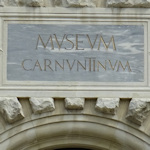
Many people think of Carnuntum as one location, but this archaeological park has more to offer anyone wishing to delve into Roman history.
- Also visit a triumphal monument, two amphitheaters, and a gladiator training arena
- The museum is a delight
- You might spot ground squirrels, too
- 2024 season runs until Nov 17
- See also:
The marvellous reconstructed Roman buildings form the heart of Carnuntum. But don’t forget the other locations, like…
The Heidentor
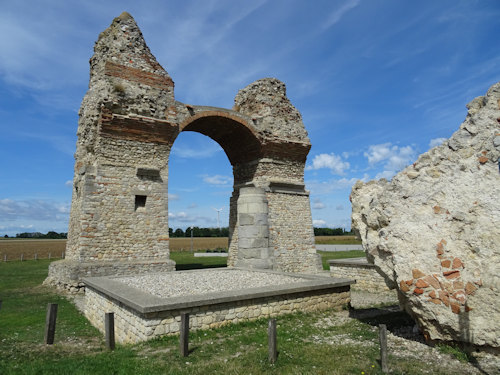
(Only one arch remains)
Sometime during the fourth century, the Romans erected a triumphal monument at Carnuntum, though a little away from the town. Arches connected four thick columns surrounding a tall plinth.
We can only guess at the purpose, but a plausible theory is that Emperor Constantius II put up the Heidentor to mark some victory in his efforts to repel invaders. Better than a celebratory pint and a dormouse-on-a-stick, I guess.
Fields and wind turbines ring the remains, today, with information displays explaining the Heidentor’s likely history, restoration efforts, and similar. With the right lens, you can capture the turbines framed by the surviving arch of this monument.
If you’re on foot, the Tor’s a bit of walk, mind you…about 25 minutes from the main car park.
Carnuntinum Museum
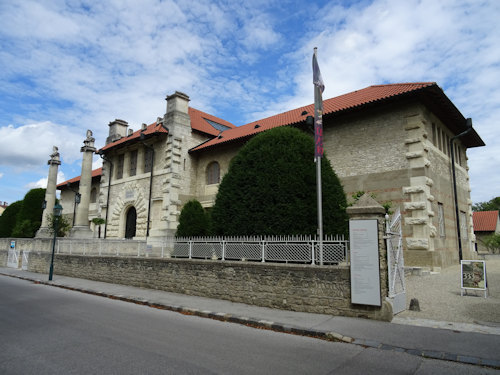
(Home to a special exhibition)
This museum in the town of Bad Deutsch-Altenburg opened in the reign of Franz Joseph and looks almost as Roman as its contents.
Designed to showcase the collection of artifacts discovered in the Carnuntum area over time, it does so largely using temporary exhibitions that change every few years.
The current exhibition opened at the end of June, 2022: the Metropolis on the Danube Limes. You do need a Carnuntum ticket to go inside the museum (see here for details).
Town amphitheatre and gladiator school
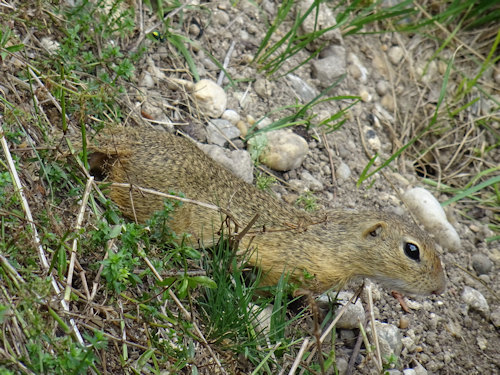
(A common sight at the amphitheatre)
Archaeologists recently discovered the site of a gladiatorial school complex just a few minutes walk from the main Carnuntum car park. You can’t see any of it, but a wooden reconstruction of the training arena lets you imagine the clash of sword on shield (or Gladius on Scutum).
The arena’s neighbour is a large 2nd-century civilian amphitheater: what’s left of a building that once housed an audience of 12000+.
Though much of the amphitheater forms little more than a grass-covered incline, the ring of slender trees (poplars?) that surround the circular site confers a Mediterranean feel on the place.
Best of all, the area is now full of European ground squirrels (pictured above), which you don’t get to see too often. I imagine the Romans once ate them, so the squirrels got the last laugh.
Military amphitheatre
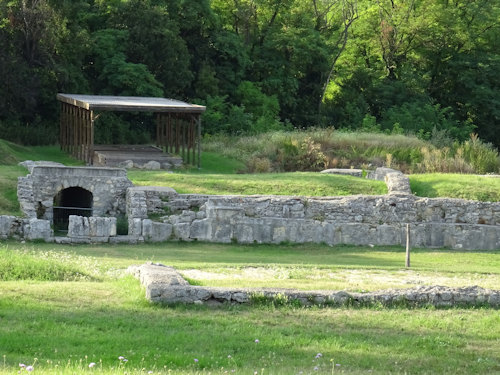
(Remains of a gladiatorial venue)
This 1st-century amphitheatre offers a little more to look around than its civilian equivalent, though it is, inevitably, mostly ruins. An adjacent building has a small exhibition on gladiators along with a multimedia interactive city plan.
You can still see the mouth of the tunnel the fighters presumably emerged from. Above it stands an inscription, IIII viri municipii Aelii Carnunti, which I believe is some kind of dedication that also highlights Carnuntum’s city status (achieved in the time of Emperor Hadrian, builder of Scottish walls).
Close your eyes, and you can smell the sweat of the combatants, hear the roar of the crowd, and sense the fear of the man who forgot to put a parking permit on his chariot. This location also needs a Carnuntum ticket.
How to see the sites
See the Carnuntum overview for directions to the various locations, including the main site with its reconstructions.